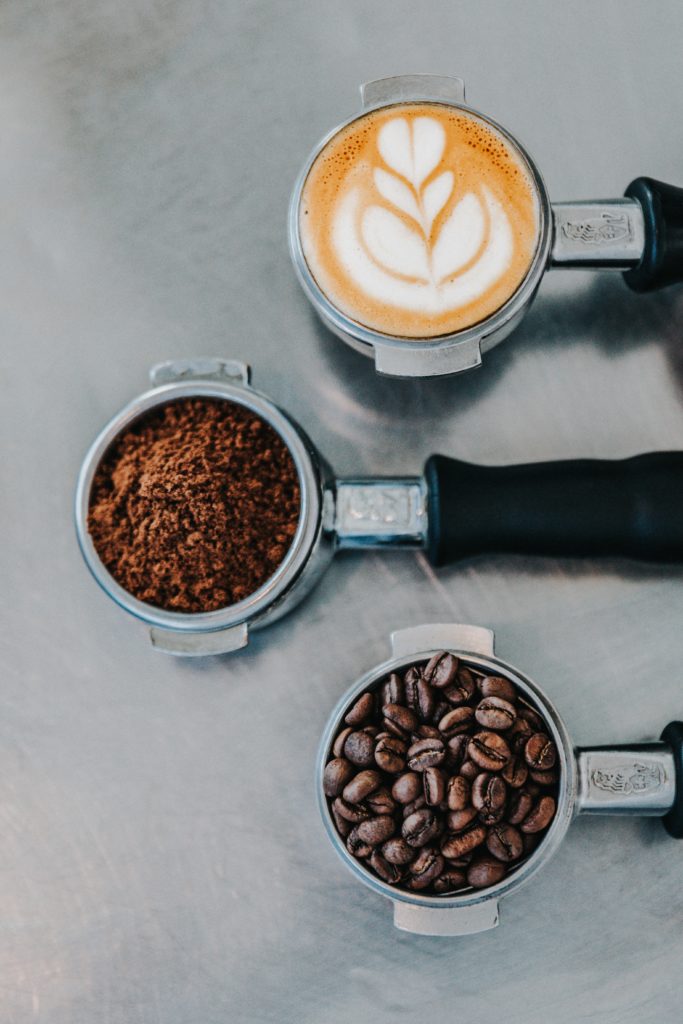At an industrial level, green coffee beans undergo an intricate roasting process that turns them into a drinkable form. It is not an easy job even to the best coffee grinders or enthusiasts, for coffee beans come with sugars, acids, and proteins that require careful roasting on the right flame to taste as we know it. Any brewer worth their salt would adhere to stringent procedures and blending scientific data to balance the taste and give the end-product the correct aroma.
Here is how coffee beans are roasted and processed
Step 1: Introduction to roaster’s charge system

Each batch of green coffee beans starts its journey in the charging system of the roaster. The roaster is first heated to 500F before a batch of beans is dropped inside. Because the roaster is shaped like a drum, constant spinning is required to keep the beans in contact with the hot surface. Paddles inside the drum help in tossing and mixing the beans in the air very much the same way your clothing dryer works.
Step 2: Rapid roasting
For about five minutes, the temperature in the drum is increased rapidly to achieve the ideal roasting heat. The reason why this process has to be quick is that the coffee would lose a lot of essential moisture if heated for long in high temperatures. Worse yet, the surface of the beans could be scorched.
At this stage, coffee beans change their color from green to yellowish hue. The smell changes from that of fresh grass to that of dry hay.
Step 3: Slow roasting
Five minutes after Step 1, coffee beans are roasted on mild heat (somewhere between 300F and 350F). This is the step in which the “precursors” to the aromas and tastes that will form during higher temperatures are developed. As such, the internal temperature, moisture, and pressure are carefully controlled to avoid over-roasting. The smell changes from that of freshly cut grass to that of hot bread.
At this stage, the color of the beans changes from yellowish to light brown. The small changes from dry hay-like to that of hot bread.
Step 4: Full flavor development
This step takes place during the last two to five minutes (but it can depend on the roast degree and the type of coffee beans). This is where the beans get their full flavor. At about 360F, cracks (often referred to as “flavor crack/first crack”) occurs. This cracking sound, often in form of popping noise, is due to the expansion of the beans under pressure and chemical reactions. Towards the end of this stage gasses and water vapor leave the beans, causing the air pressure to collapse. As a result, you end up with beans with just the right internal temperature, moister, and pressure all of which contribute to the overall flavor.
Step 5: Reaction and formation of the final flavor
Beans are rapidly roasted at temperatures between 360F and 400F to start a reaction between amino acids and sugars. The objective of this step is to achieve the desired and final flavor. The flavor of beans roasted to the “medium roast” degree is obtained from the carmelization of constituent sugars and the reaction between amino acids and sugars. It is very similar to the flavor achieved when browning the meat on a grill.
The color of the beans shifts towards dark brown while the aroma becomes malty and cocoa-like.
Step 6: Type-specific roasting
It is important to note that each type of coffee has its final temperature and period of roasting. This can be developed through experimentation or intuition or both. For instance, the Yirgacheffe coffee is only roasted at 380F within 12:30 while the Honduran Espresso would be fine with 389F at 14:30.
In this step, therefore, the individual needs of the type of coffee are considered when roasting to achieve type-specific results. Therefore, you can easily find an espresso blend and enjoy the variety of varieties.
Step 7: Darkening and flavor adjustments

The final color of the coffee is not achieved by chance. On the contrary, the manufacturer has control over how dark or light the final product should be. Also, final adjustments can be made on the beans to achieve unique flavors.
Coffee beans roasted to 395F or higher are classed as dark roasts. At such high temperatures, the previously acquired aromas and tastes are combusted to form new aromas with spicy, smoky, and toasty signature. If the taste is too acidic or sweet, it can be adjusted to become bitter. The full characteristics of most dark roasts are achieved at between 410F and 425F.
Step 8: Grinding
Grinding can be part of the coffee roasting and processing process depending on the consumer. Some buyers would just buy the processed beans and sort everything else on their own while others tend to buy coffee in powder form and eliminate the extra labor of grinding the beans. Either way, the taste is almost the same.
The primary objective of grinding the beans is to ease consumption (keep them ever ready for preparing a cup of coffee) but it can also help in boosting the flavor. For instance, fine coffee dissolves readily compared to coarse coffee, and its flavor is more profound. Even the best coffee grinders have a hard time balancing the texture of the product and flavor.
And that’s how to roast and process coffee beans
You could be divided between home-roasted beans and industrial processed coffee. The roasting and processing method is almost the same provided the temperatures are observed and the signature “flavor crack” is heard. It is important to note that it takes intuition and experimentation to master the art of coffee roasting and processing. Otherwise, the intricate heat requirements and regulations of such factors as the moisture and pressure would prove difficult even if you possess the preparation manual.















